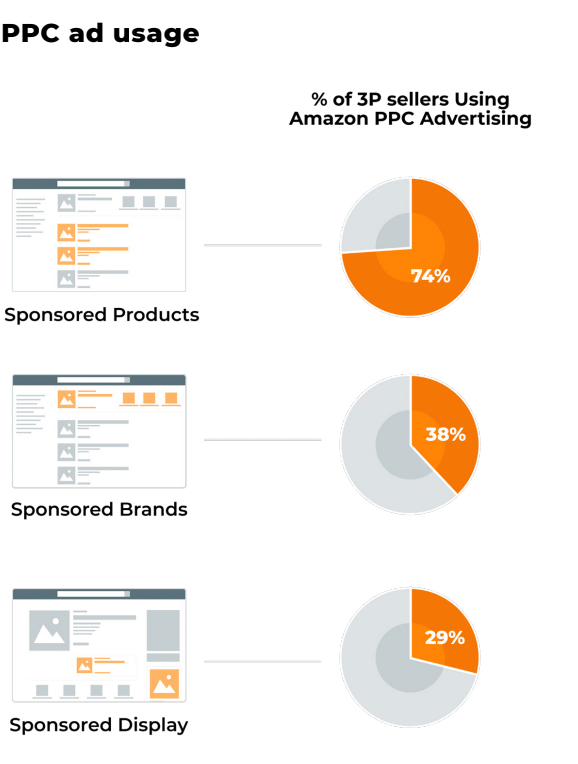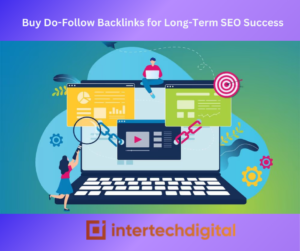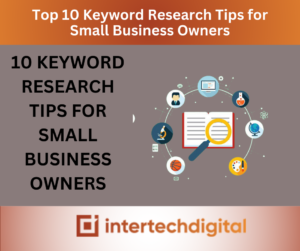Sponsored Products Ads are one of the most efficient ways to promote a fresh new product to potential customers, whether you’re a beginner releasing your first product or a 6-year Amazon selling veteran introducing your 25th product (like me!).
Customers don’t realize they’re looking at an ad since Sponsored Products ads blend in so nicely with Amazon’s organic search results. According to our Amazon Advertising Report for 2022, they’re the most popular sort of ad among consumers across the whole Amazon advertising suite of products.
It might be tough for newly launched products to get the initial sales required to rise up in the organic search rankings. Your products can appear on the first page of Google right away if you use relevant keywords in your adverts.
Even if you have no prior advertising experience, they are straightforward to set up. Let’s take a closer look at Sponsored Products advertisements, how they function, and how to get started with your first campaign.

What is the difference between a Sponsored Products ad and a regular ad?
Amazon’s Sponsored Products adverts are a sort of pay-per-click (PPC) ads. They enable you to bid on certain keywords to achieve maximum visibility in Amazon search results as soon as your product is launched. You pay a tiny price for each click on your ad, as the word “PPC” implies. Sponsored Products ads are especially appealing because of their prominent placement on the page and resemblance to an organic listing thumbnail.
Sponsored Products advertising is the most popular ad kind on Amazon because they don’t require brand registration, unlike Sponsored Brands, Sponsored Brands Video, or Sponsored Display ads. Sponsored Products advertising is used by 74% of third-party vendors.
Despite the fact that more merchants are branching out into other forms of Amazon PPC, Sponsored Products advertisements still account for 76 percent of all Amazon ad spending.
What are Sponsored Products advertisements and how do they work?
As previously said, Sponsored Products ads are a sort of pay-per-click advertising, which means you’ll be competing with other vendors for visibility to potential buyers. You have a lot of control over your daily advertising budget since you determine how much you want to spend each click on each specific target.
The following is how Sponsored Products advertisements work: To begin, you must first establish a set of relevant phrases or products for which your ad should show in Amazon search results. Customers should find your ad relevant to their search and click on it to read your product description page, which is your goal. After that, you tell Amazon how much you want to pay per click (a process known as “bidding”), and an algorithm determines where your ads will appear on search results pages.
Sponsored Products are similar to organic listing results and can appear at the top of the page, mixed in with organic listings further down the page, or even on the product detail pages of your competitors.
If you bid high enough, you’ll get the first page of search results, which is your ultimate objective because it gives you the highest chance of reaching the most people. If you bid too low, your advertising may not appear at all.
Whether or not a customer purchases your goods after clicking your ad, you will be charged the value of your keyword bid.
Read More: How to Find a Profitable Amazon FBA Niche

Options for Targeting
You have two targeting choices with Sponsored Products: automatic targeting and manual targeting.
Targeting is Done Automatically
Based on your listing information, the automatic targeting option offers Amazon control over which keywords or goods your campaign will target. If you wish to employ automatic targeting, you should conduct extensive keyword research before drafting your listing to ensure that Amazon chooses the most appropriate targets.
Sellers can choose from four different keyword match kinds when using the automatic targeting option:
Close match: These advertisements appear when customers search for terms that are similar to the product you’re selling.
Loose match: These adverts display when customers search for keywords that are only loosely related.
Substitutes: They target customers who are thinking about buying a product that is identical to yours but is sold by a different company.
Complements: They target customers who are looking at detailed pages of products that are similar to yours.
Setting up an automatic campaign takes only a few minutes, making it a terrific alternative for new sellers. Your campaign will acquire enough data over time to allow you to optimize it.
Automatic campaigns can also be used to conduct more keyword research, as Amazon may target a term you’ve never considered. You’ll be able to see every automatically produced target, how much was spent on each, and how many sales occurred from each target inside your ad campaign.
Sellers can now run the same campaigns on other Amazon marketplaces where they offer the same products using automatic targeting campaigns. For each marketplace, Amazon will convert your budget to the local currency, compare products, and proposed bids.
Read More: What Is Amazon FBA and How Does It Work?
Targeting by Hand
You have more control over the keywords or goods your campaign will target if you choose the manual option. You can also choose from a list of suggested keywords provided by Amazon, or you can create your own. You can even specify individual bids for each term.
When you know the particular search phrases clients use to find your sort of goods, you can utilize keyword targeting. A program like Keyword Scout can help you locate relevant, high-volume keywords.
You can target certain rival ASINs, categories, brands, or other product qualities with product targeting.
You have the option of targeting both keywords and products. Make two separate manual campaigns, one for each targeting choice.
Strategy for Bidding
You must choose your campaign bidding strategy — how you want to pay for clicks on your advertisements — for both automatic and manual campaigns.
But first, what precisely is a bid?
When a shopper clicks on your ad, the bid is the amount you’re willing to spend. The amount you spend on each click will be determined by your competitors’ bids. Your bid is simply the most amount you’re ready to spend for a single click.
Let’s imagine you want to target the keyword term “marshmallow sticks for a campfire” and bid $0.50. If you are not the highest bidder, you will only pay the full fifty cents for each click. If the highest bid is $0.50, you will be charged the amount of the second-highest bid, which may be $0.45.
Amazon will advise you on how much to bid per term. Keyword Scout may also show you the expected PPC bid cost per keyword.
You can also alter your bids based on where they are placed.
Optimizing Your Advertising Campaigns
Before making any edits or tweaks, we recommend that you let your campaigns run for at least two weeks. It may appear that you are losing money at first, but this is usually when a new campaign is launched.
Allow Amazon to gather as much data as possible on your campaign’s performance by resisting the impulse to alter it within the first two weeks. When it’s time to optimize your campaign, you’ll be able to make informed judgments.
You must first determine your break-even advertising cost of sales, or ACoS before you can successfully optimize your campaigns.
The amount of income generated per dollar spent on an ad campaign is referred to as ACoS. It’s determined as a percentage by dividing total ad spend by total attributable ad revenue.
For example, if you paid $4 on an ad campaign and received $20 in revenue, your ACoS is 20% ($4/$20 = 0.20).
Divide your profit by your revenue to arrive at your break-even ACoS. Subtract your total product cost and Amazon’s fees from your sales price to get your revenue. You now have a better idea of how much of your sales price you can spend on PPC before you start losing money.
You can make informed selections about which keywords to maintain in your campaign and which ones to add to your negative keyword list once you know your goal ACoS.
Whether your campaign uses automatic or manual targeting will determine your optimization technique.
Read More: Guide to Amazon Retail Arbitrage in 2022

Optimizing a Campaign with Automatic Targeting
Select your automatic targeting campaign in the campaign manager. You can see a summary of your campaign at the top of the page, including how much you paid, how much you achieved in sales, the ACoS, and total impressions. You may check how many clicks your campaign has received and how many orders the ad campaign has generated further down.
The search terms tab will appear after you click on your automatic ad group. This will display all of the keywords Amazon has been using to find your goods.
For each search term, you can see a breakdown of the number of clicks, spend, sales, and ACoS.
You’ll notice the ASINs Amazon is targeting as you go through the list, as Amazon may choose to put your ad on competitors’ product listings.
We’re looking for two things right now: our worst-performing keywords and our best-performing keywords.
Worst-performing keywords are those on which you’re spending a lot of money bidding but aren’t bringing in any sales.
Sort by clicks or spend to find them (descending). If you see terms with a lot of clicks but no sales, you should cease targeting them. Any term with ten clicks but no sales should be removed, according to the general guideline.
Create a list of these keywords, then go to negative targeting and add them to the list. These keywords will no longer be targeted by Amazon.
Since you removed low-conversion terms, your ACoS for your automatic campaign will begin to decline during the following week or so.
Keywords with the best performance are those with a low ACoS. (and are therefore valuable). We want to shift them out of the automatic targeting campaign and into a manual targeting campaign so that we have more control over how much money we spend on them.
Sort your results by ACoS to identify the search phrases with the most sales but the lowest ACoS. Then add them to your list of people you don’t want to target.
Then you’ll want to add those same keywords to your manual targeting campaign, where you may fine-tune the bids for each one.
Manually targeting a campaign and optimizing it
The way you optimize manual campaigns will differ from how you optimize automatic campaigns.
You should immediately add the high-performing keywords from your automatic campaign to a manual campaign after you’ve extracted them. We recommend utilizing exact matching because you already know those certain keywords perform well.
To begin, go to the manual campaign you want to improve and sort by cost. The idea is to reduce spending on keywords that aren’t doing well while increasing spending on those that are.
You determined your ACoS earlier (what you are willing to spend for each keyword). If your target ACoS is 30%, you’ll want to make sure you’re not spending any more than that. Examine each term in your campaign and make the following adjustments to your bids:
- Reduce or eliminate your bids for any keyword with an ACoS of more over 30%.
- Reduce your bids for keywords that get a lot of impressions and clicks but not a lot of purchases.
- Boost your bids for keywords with low impressions and ACoS.
- Increase your bid on keywords that have little to no impressions but are extremely relevant.
- appropriate for your product After that, wait a few weeks to see if anything has changed.
- Bids on keywords with a lot of clicks and a lot of ACoS should be paused.
To guarantee that your campaigns are performing at their best, repeat this step every week or so. When you initially start your campaign, you’ll have more work to do, but you’ll notice that it gets easier over time. There won’t be many tweaks to do after a few months because your campaigns will be more optimized each time.



